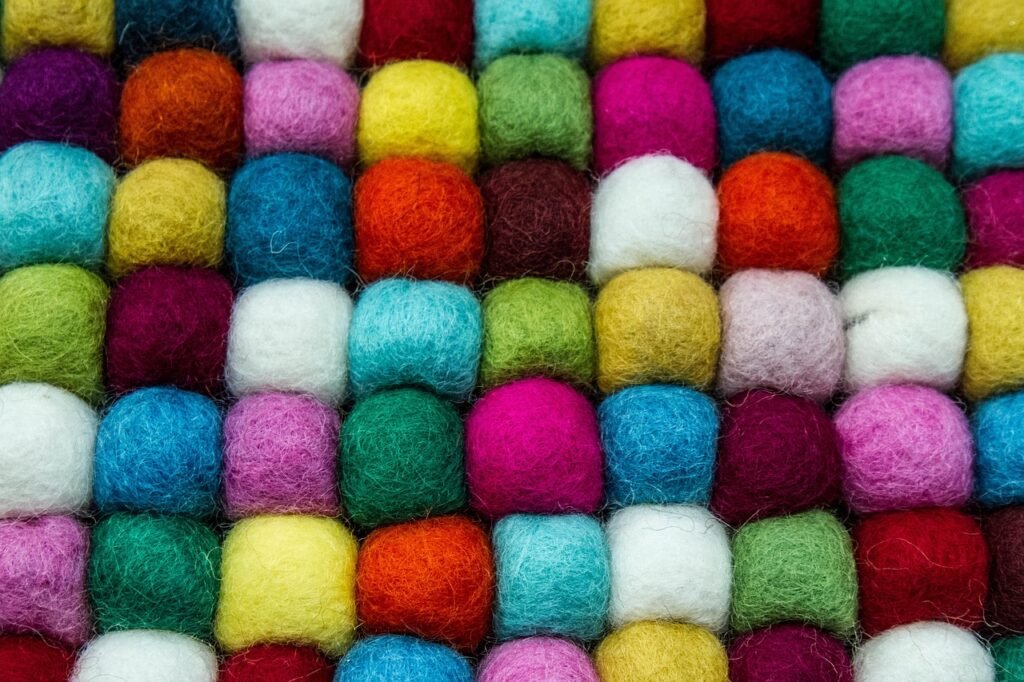
Intro
Are you curious about what makes you tick and how you interact with the world? The True Colors Personality Test is an insightful tool that can help you unravel the mysteries of your personality style. This test is a fascinating way to understand yourself and others, enhancing your relationships and personal growth. Whether you’re exploring your love languages or seeking ways to improve your work dynamics, the True Colors Personality Test offers valuable insights that can guide your journey.
Introduction to the True Colors Personality Test

The True Colors Personality Test, a renowned tool from the 1970s by Don Lowry, segments individuals into four vibrant categories: Blue, Gold, Green, and Orange.
These color-coded personality types encapsulate diverse behavioral patterns and communication preferences, making the test an excellent guide for personal and professional growth.
Unlike many personality assessments, True Colors simplifies complex theories into an approachable and practical format, emphasizing improving interpersonal interactions.
Each color type reveals unique characteristics and motivations.
Blue personalities, for example, thrive on empathy and connection, while Golds find joy in structure and reliability.
Greens, with their analytical minds, seek knowledge and logical understanding, whereas Oranges are driven by energy, spontaneity, and adventure.
This spectrum of traits highlights the importance of appreciating different perspectives and fostering harmonious relationships.
What sets the True Colors Personality Test apart is its focus on practical application.
By understanding your primary color and those of the people around you, you can tailor your interactions to enhance communication and collaboration.
This insight is invaluable in both personal relationships and professional environments, where diverse personality styles can significantly impact dynamics and productivity.
The True Colors Personality Test also offers a fresh perspective on self-awareness.
It encourages you to reflect on your natural tendencies and how they influence your behavior and relationships.
This reflection can lead to a deeper understanding of your strengths and areas for growth, empowering you to navigate life’s challenges with confidence and clarity.
Whether you’re looking to improve your relationships, boost your career, or simply gain a better understanding of yourself, the True Colors Personality Test provides a comprehensive and engaging framework for exploring the rich tapestry of human personality.
Understanding the Blue Personality Type

Blue personalities are driven by a deep sense of empathy and emotional connection.
They value harmony, relationships, and authentic communication. Often seen as dependable and disciplined, Blues make excellent friends and partners.
A study involving over 800 South Korean adults identified a link between color preference and personality traits, noting that those who resonate with blue tend to display dependability and self-discipline.
Blues thrive in environments where they can express themselves and support others, making them natural caregivers and collaborators.
Exploring the Gold Personality Type

Gold personality types are the organizers and planners of the world.
They crave stability, structure, and order in both their personal and professional lives.
Gold individuals are known for their reliability, conscientiousness, and strong work ethic.
They often take on leadership roles, as they excel at managing tasks and ensuring that projects run smoothly.
People with a Gold personality find fulfillment in maintaining traditions and ensuring that everyone around them feels secure and cared for.
Their love for order extends to their love languages, where they appreciate acts of service and tangible demonstrations of care.
Golds have an innate ability to create systems that bring a sense of predictability and safety to their surroundings.
This is evident in their meticulous planning and attention to detail, traits that make them indispensable in any team or organization.
In a study of over 800 South Korean adults, it was found that those who resonate with Gold often exhibit high levels of dependability and self-discipline, qualities that are vital in both personal and professional settings.
Their commitment to duty and responsibility often means they can be counted on to follow through on promises and ensure that goals are met.
This dedication to order and efficiency makes them exceptional at roles that require careful planning and execution, such as project management, event planning, and administrative positions.
Gold personalities also value tradition and continuity, which translates into a deep respect for established practices and procedures.
When it comes to relationships, Golds are loyal and dedicated partners who value stability and consistency.
They often express their love through practical actions that provide comfort and security to their loved ones.
This practical approach to affection can be seen in their preference for love languages that involve acts of service and thoughtful gestures.
Golds create a sense of harmony and predictability that is deeply appreciated by those around them.
The Analytical Mind of the Green Personality Type

Green personalities are characterized by their analytical and logical approach to life.
They are driven by a quest for knowledge and understanding, often delving into complex subjects to satisfy their curiosity.
A study of over 800 South Korean adults found that those who favor green often exhibit emotional stability and conscientiousness, traits commonly seen in analytical thinkers.
Green individuals thrive in environments that challenge their intellect and allow them to explore new ideas.
They are natural problem solvers who enjoy dissecting issues to uncover underlying patterns and solutions.
This analytical mindset often leads them to careers in fields like science, technology, engineering, and mathematics (STEM), where their skills can be put to the test.
In personal relationships, Greens value independence and intellectual stimulation.
They may prefer love languages that involve shared intellectual pursuits or thoughtful conversations.
This preference for deep, meaningful interactions makes them engaging partners who can discuss a wide range of topics with enthusiasm and insight.
Their analytical nature also makes Greens adept at understanding and interpreting complex information, whether in academic settings or professional environments.
They can sift through data and identify key trends, making them invaluable in roles that require strategic thinking and long-term planning.
While Greens are often seen as reserved, their passion for learning and growth is unmistakable.
They bring a unique perspective to any team or relationship, always seeking to enhance their understanding and contribute thoughtfully.
Their conscientiousness and emotional stability provide a steady foundation, allowing them to navigate challenges with a calm and rational demeanor.
The Dynamic Nature of the Orange Personality Type

Orange personalities are the life of the party, bursting with energy and a zest for life that’s contagious.
They thrive on spontaneity and adventure, often seeking out new experiences and challenges. Oranges are natural risk-takers, driven by a desire to live in the moment and savor every opportunity.
This dynamic approach to life makes them incredibly adaptable, able to pivot and respond to changes with ease.
In their professional lives, Oranges excel in environments that are fast-paced and ever-changing.
They are great problem-solvers who think on their feet and come up with creative solutions on the fly.
This makes them particularly well-suited for careers that require quick decision-making and innovation, such as entrepreneurship, sales, or emergency services.
In relationships, Oranges bring excitement and passion.
They value experiences over material things, often showing their love through shared adventures and spontaneous acts of kindness.
Their enthusiasm can be incredibly uplifting, infusing their relationships with a sense of fun and excitement.
However, their need for constant stimulation can sometimes make it challenging for them to settle into routines or long-term commitments without a bit of variety to keep things interesting.
Oranges are also known for their resilience.
They bounce back quickly from setbacks and are always ready to tackle the next challenge.
This can be inspiring to those around them, fostering a sense of optimism and can-do attitude within their circles.
Whether it’s a new project at work or a spontaneous weekend getaway, Oranges are always up for the adventure, making life with them anything but dull.
How to Take the True Colors Personality Test
Taking the True Colors Personality Test is an engaging and simple process.
You will find the test below and the the scoring instructions below that.
To start, look for a quiet and comfortable space free from distractions.
For the most accurate and insightful results, it’s crucial to answer each question honestly and thoughtfully, reflecting your genuine preferences and behaviors.
Once you begin the test, you’ll be presented with a series of statements or questions designed to reveal your natural inclinations.
As you progress, the test will gauge your tendencies and align them with one of the four True Colors: Blue, Gold, Green, or Orange.
It’s a dynamic journey of self-discovery that can unveil aspects of your personality you may not have been fully aware of.
After completing the test, you’ll be assigned a primary color that represents your dominant personality type, along with a secondary color that will provide an additional layer to your profile.
These results offer a detailed look into your core motivations, strengths, and interaction styles.
Understanding these aspects can significantly enhance your ability to connect with others, whether in personal relationships or professional settings.
Don’t hesitate to explore different versions of the test to see if your results vary.
Sometimes, taking the test in multiple formats can offer a more rounded perspective of your personality.
Moreover, many platforms provide supplementary materials that delve deeper into the traits and characteristics of each color, offering further insights into your personality style.
By taking the True Colors Personality Test, you embark on a journey of self-awareness and growth, equipping yourself with the knowledge to navigate life’s complexities with confidence and clarity.
True Colors Personality Test:
1. In a group project, I prefer to:
- A) Ensure everyone feels included and valued.
- B) Keep everything organized and on schedule.
- C) Analyze the best approach and gather information.
- D) Bring excitement and creativity to the project.
2. When faced with a challenge, I tend to:
- A) Seek support from others and talk it out.
- B) Create a detailed plan to solve the problem.
- C) Research and analyze the situation thoroughly.
- D) Jump in and tackle it head-on, enjoying the thrill.
3. I feel most fulfilled when:
- A) I help others and build strong relationships.
- B) I achieve my goals and follow through on commitments.
- C) I learn something new or solve a complex problem.
- D) I experience something new and exciting.
4. In conversations, I often:
- A) Listen actively and show empathy.
- B) Stick to the facts and focus on details.
- C) Ask questions and dig deeper into topics.
- D) Share anecdotes and keep the mood light.
5. My friends would describe me as:
- A) Compassionate and caring.
- B) Responsible and dependable.
- C) Inquisitive and logical.
- D) Fun-loving and adventurous.
6. I prefer my work environment to be:
- A) Collaborative and supportive.
- B) Structured and organized.
- C) Innovative and intellectually stimulating.
- D) Dynamic and flexible.
7. When making decisions, I rely on:
- A) My feelings and intuition about what feels right.
- B) Established rules and procedures.
- C) Facts and data to guide me.
- D) What seems most exciting or appealing.
8. I enjoy activities that involve:
- A) Connecting with others emotionally.
- B) Planning and executing detailed tasks.
- C) Researching or solving puzzles.
- D) Engaging in spontaneous adventures.
9. My ideal weekend would involve:
- A) Spending quality time with friends and family.
- B) Organizing my space or catching up on projects.
- C) Exploring a new topic or hobby.
- D) Trying something new and thrilling, like skydiving.
10. I handle stress by:
- A) Reaching out to friends for support.
- B) Creating a list and prioritizing tasks.
- C) Analyzing the situation and making a plan.
- D) Finding a fun distraction or activity.
11. In a leadership role, I prioritize:
- A) Building strong team relationships.
- B) Setting clear expectations and guidelines.
- C) Encouraging innovative ideas and critical thinking.
- D) Keeping the energy high and engaging everyone.
12. I am motivated by:
- A) Meaningful connections and contributions.
- B) Achievements and recognition.
- C) Knowledge and understanding.
- D) Excitement and new experiences.
13. When reflecting on my personal growth, I focus on:
- A) My emotional well-being and relationships.
- B) Achieving personal goals and milestones.
- C) Expanding my knowledge and skills.
- D) Trying new things and stepping outside my comfort zone.
14. I prefer to communicate by:
- A) Sharing feelings and personal stories.
- B) Being direct and to the point.
- C) Using logic and reasoning.
- D) Keeping things light-hearted and engaging.
15. I find joy in:
- A) Helping others achieve their potential.
- B) Creating order and efficiency.
- C) Discovering new theories or ideas.
- D) Experiencing life to the fullest.
16. I typically respond to conflict by:
- A) Seeking understanding and resolution.
- B) Sticking to the rules and finding a fair solution.
- C) Analyzing the situation to find the best outcome.
- D) Trying to lighten the mood and move forward.
17. My favorite type of reading material is:
- A) Inspirational stories or self-help books.
- B) Biographies of successful individuals or guides.
- C) Scientific journals or analytical books.
- D) Adventure novels or travel stories.
18. I thrive in situations where:
- A) I can connect emotionally with others.
- B) There is a clear structure and plan.
- C) I can think critically and innovate.
- D) I can act quickly and take risks.
19. When collaborating, I am most concerned with:
- A) Ensuring everyone’s voice is heard.
- B) Meeting deadlines and following procedures.
- C) Generating new ideas and solutions.
- D) Keeping the energy up and engaging everyone.
20. My greatest strength is:
- A) My ability to empathize with others.
- B) My reliability and organizational skills.
- C) My analytical thinking and problem-solving.
- D) My enthusiasm and willingness to take risks.
Scoring Instructions
- Count the number of A, B, C, and D responses to determine your primary color.
- A-Blue, B-Gold, C-Green, D-Orange
- The color with the highest number of responses indicates your dominant personality type.
- The next color with the highest number of responses indicates your secondary personality type.
Interpreting Your True Colors Results
Interpreting your True Colors results can be an enlightening experience, offering a window into your innate tendencies and how you navigate the world.
Once you identify your primary color, delve into the traits associated with it.
Are you a Blue, driven by empathy and connection? Or perhaps a Gold, with a passion for order and reliability?
Maybe you’re a Green, fueled by a thirst for knowledge and logic, or an Orange, brimming with energy and a love for spontaneity.
As you reflect on your primary color, also consider your secondary color.
This provides an additional nuance to your personality profile, offering a more rounded understanding of your character.
For example, a primary Green with secondary Blue traits might blend analytical thinking with a strong sense of empathy, creating a unique and balanced approach to problem-solving and relationships.
Understanding your color spectrum can help you recognize your strengths and potential areas for growth.
Are you leveraging your natural abilities to their fullest extent? Are there aspects of your personality you’ve overlooked or undervalued?
By exploring these questions, you can uncover opportunities for personal development and more effective interactions with others.
Remember that your True Colors are not static; they can evolve as you grow and adapt to different life experiences.
Use this dynamic perspective to stay open to change and continuous improvement.
The insights gained from your True Colors results can serve as a roadmap for navigating life’s challenges and seizing opportunities with confidence and clarity.
Whether in personal relationships or professional settings, this understanding empowers you to engage more authentically and effectively with the world around you.
Applying True Colors Insights to Improve Relationships

Understanding the diverse personality styles revealed by the True Colors Personality Test can revolutionize your approach to relationships.
Each color type offers unique strengths and preferences, and recognizing these can help you communicate and connect more effectively with those around you.
For instance, if you discover that your partner is a Blue personality, you might focus on fostering deeper emotional connections and being a supportive listener, as Blues value empathy and authentic communication.
On the other hand, if your friend is a Gold personality, providing stability and showing reliability in your interactions will resonate deeply with them.
In professional relationships, understanding a colleague’s True Colors can enhance teamwork and collaboration.
If a team member is identified as a Green personality, acknowledging their need for logical reasoning and thoughtful discussions can make meetings more productive and engaging.
Similarly, appreciating an Orange colleague’s enthusiasm for spontaneity and adventure can lead to more dynamic and innovative brainstorming sessions.
The True Colors insights can also be applied to family dynamics.
Recognizing that a family member is a Gold might encourage you to involve them in planning and organizing family events, as they find joy in structure and order.
Meanwhile, a child with an Orange personality might benefit from activities that allow them to express their creativity and energy freely.
By tailoring your interactions to align with the intrinsic motivations and preferences of each personality type, you can foster stronger, more harmonious relationships.
Embracing these insights not only enhances personal connections but also promotes a more empathetic and supportive environment for everyone involved.
Leveraging Your True Colors at Work

Understanding your True Colors can significantly enhance your professional life by allowing you to align your strengths with suitable roles and tasks.
For example, if your primary color is Blue, you might excel in roles that require empathy and strong interpersonal skills, such as human resources or counseling.
On the other hand, Gold personalities, with their penchant for organization and reliability, often thrive in positions involving project management or administrative duties.
Greens, who are analytical and driven by a quest for knowledge, can be highly effective in research, data analysis, or technical fields.
Their ability to dissect complex problems and uncover patterns is invaluable in roles that demand strategic thinking.
Meanwhile, the energetic and adaptable Oranges are well-suited for fast-paced environments like sales, marketing, or emergency services, where quick decision-making and innovative thinking are crucial.
Incorporating True Colors into your work life can also improve team dynamics.
By recognizing and appreciating the diverse strengths each color brings, teams can collaborate more effectively and achieve greater success.
For instance, pairing a Green’s analytical prowess with an Orange’s creativity can lead to innovative solutions and dynamic problem-solving.
Moreover, understanding the True Colors of your colleagues can enhance communication and reduce conflicts.
By tailoring your interactions based on their personality types, you foster a more cohesive and harmonious workplace environment.
Embrace these insights to unlock your full potential and elevate your professional relationships and productivity.
Support and Resources for Further Exploration

Delving into the world of True Colors opens up a pathway to self-discovery and personal growth.
To extend your understanding, consider exploring a variety of resources available online and offline.
For those seeking a deeper dive, there are books and articles that elaborate on the intricacies of each color, offering strategies to apply these insights in everyday life.
Workshops and seminars are another excellent avenue for expanding your knowledge.
These interactive experiences often provide hands-on activities and discussions, allowing you to see True Colors in action and understand how to integrate its principles into your personal and professional relationships.
Additionally, joining online communities or forums can offer support and further perspectives, enabling you to share experiences and learn from others on a similar journey.
Don’t forget to check out multimedia resources such as podcasts and video tutorials, which can present information in a more engaging and digestible format.
By leveraging these diverse tools, you can continue to evolve and apply your True Colors insights, enriching your life and enhancing your interactions with those around you.
